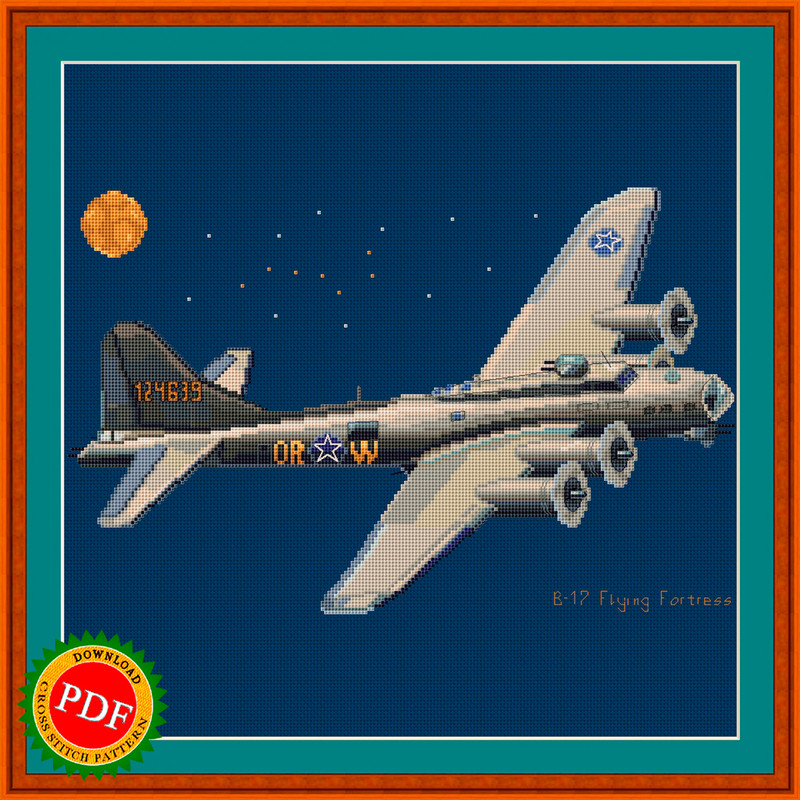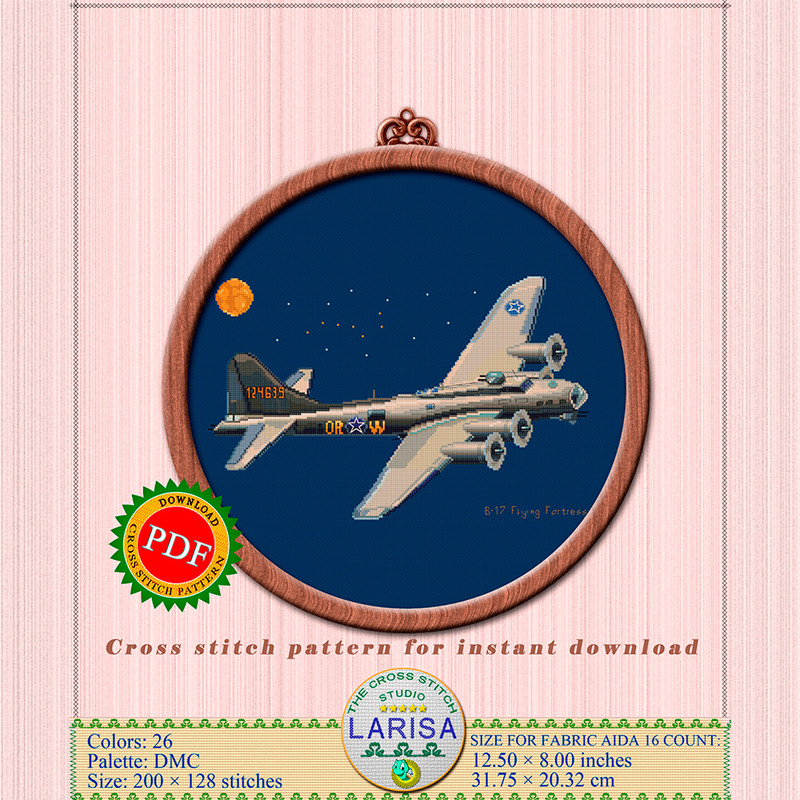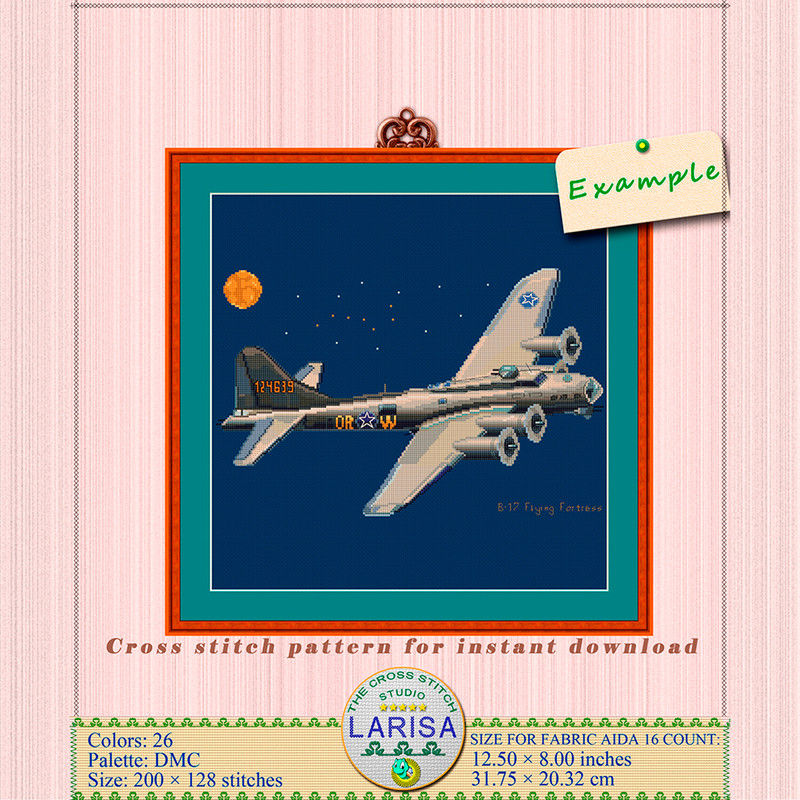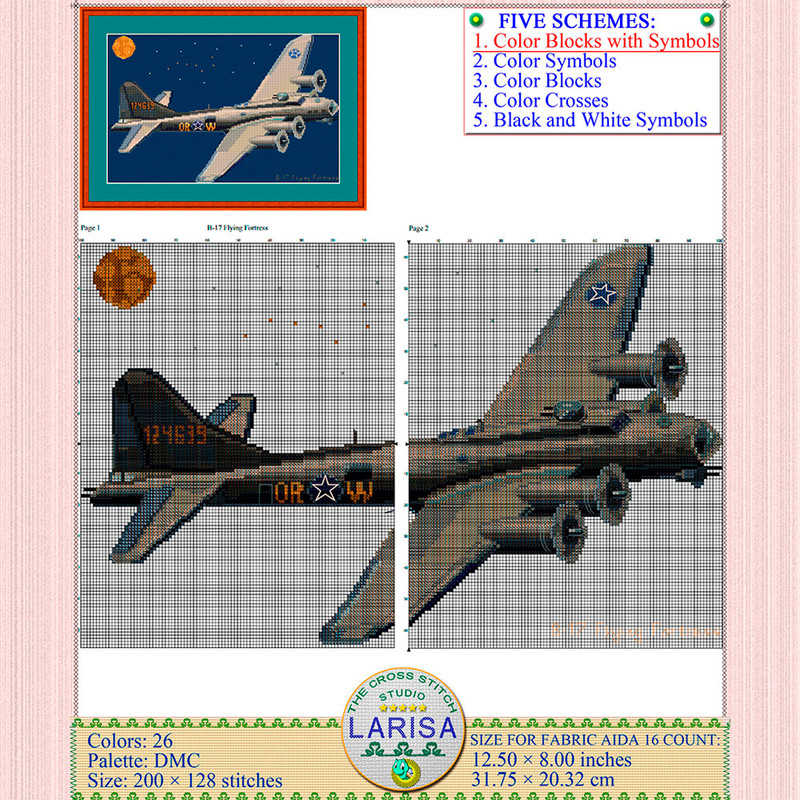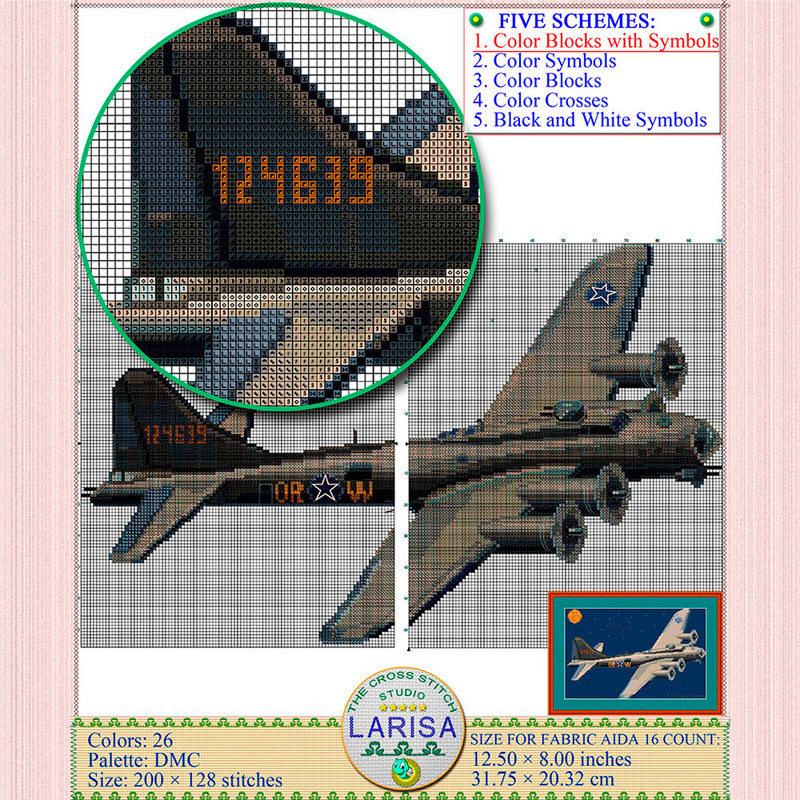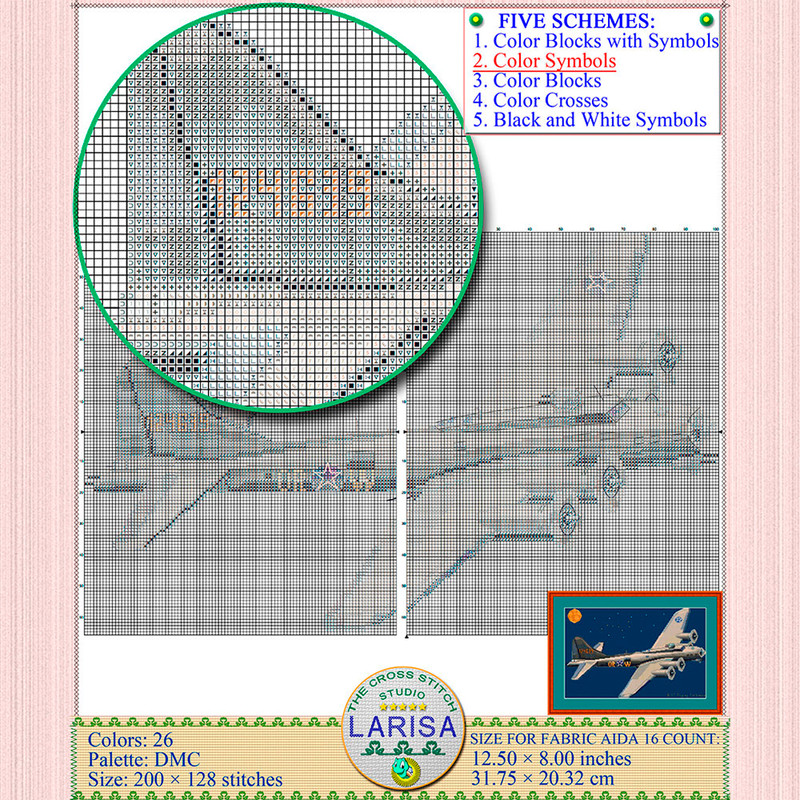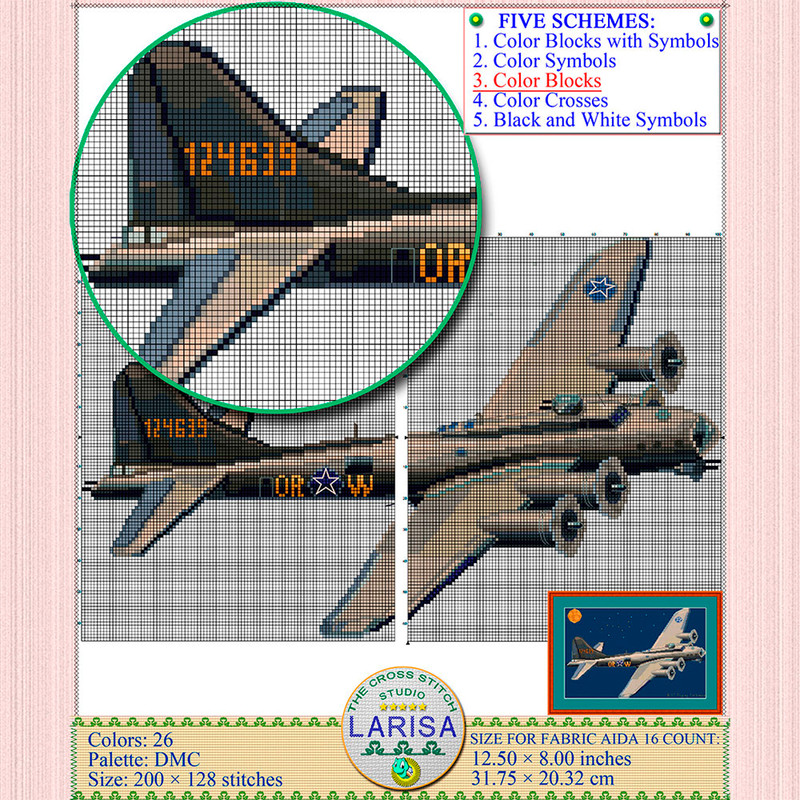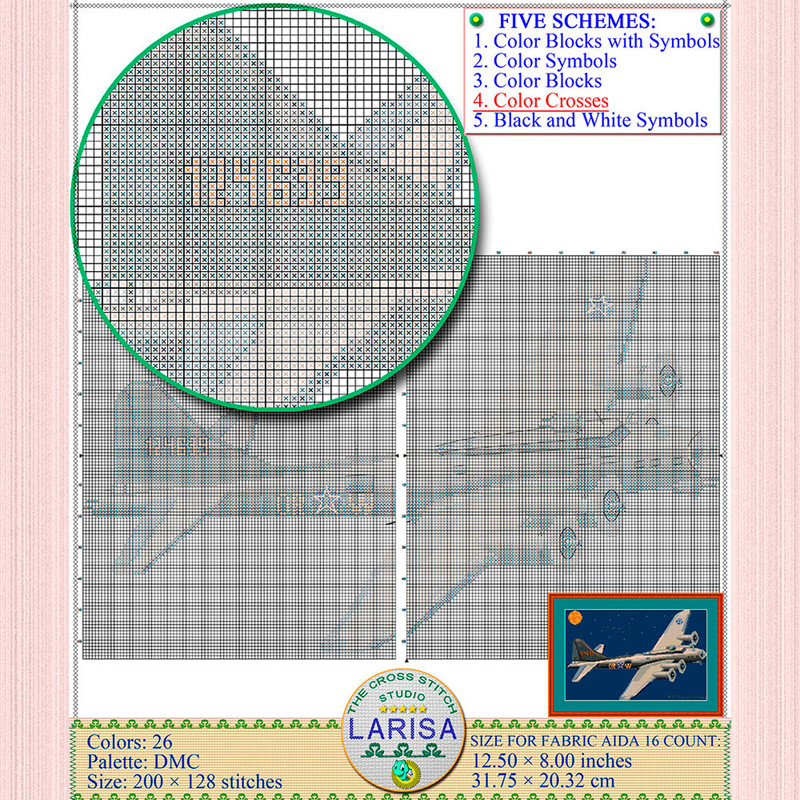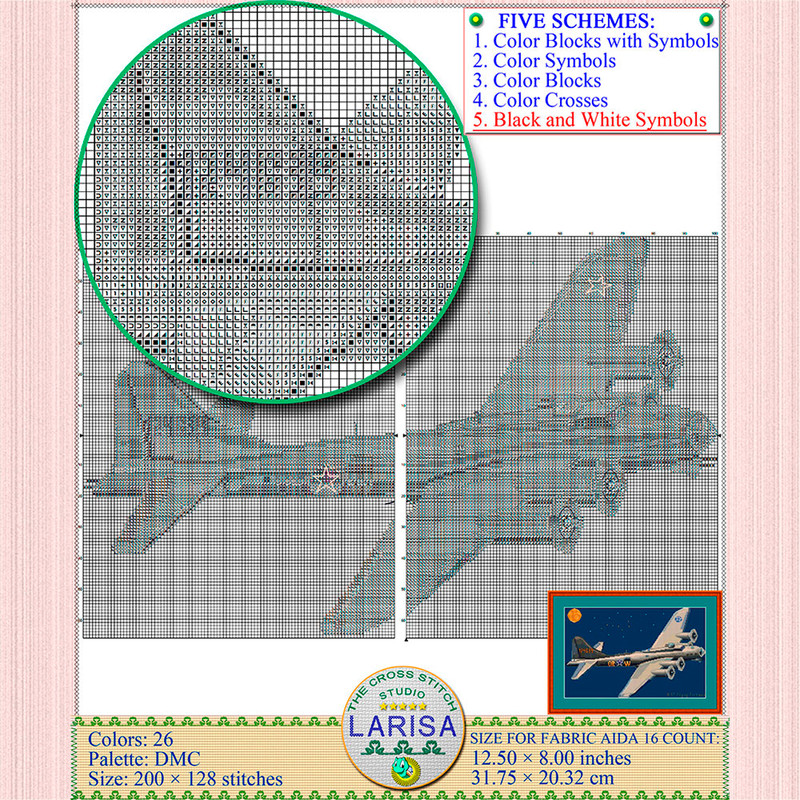Flying Fortress Cross Stitch Pattern | Heavy Bomber B-17
Flying Fortress cross stitch pattern
🔎 B-17 Flying Fortress | Heavy Bomber: cross stitch pattern, printable cross stitch, PDF pattern, printable PDF pattern.
🔔 Only digital format.
🔎 The cross-stitch pattern comes in .PDF format.
★ Specification of this cross stitch pattern for different types of fabric
• Fabric: Aida.
• Colors: 26. Palette: DMC.
• Size: 200 × 128 stitches.
• Finished size will vary depending on the count fabric/canvas you choose.
✔ 14 count ⇒ Size: 14.29 × 9.14 inches | 36.3 × 23.22 cm
✔ 16 count ⇒ Size: 12.50 × 8.00 inches | 31.75 × 20.32 cm
✔ 18 count ⇒ Size: 11.11 × 7.11 inches | 28.22 × 18.06 cm
💾 5 PDF includes:
1. FIVE SCHEMES (Fabric: 16 Navy Blue Aida):
• Color Blocks with Symbols.
• Color Symbols.
• Color Blocks.
• Color Crosses.
• Black and White Symbols.
2. Color photo for reference.
3. List of DMC thread colors (instruction and key section).
🔔 Please note this is a digital pattern only! No fabric, floss, or other materials are included in the listing.
⛔ Returns & exchanges. This is a digital product and I don’t accept returns, exchanges, or cancellations.
❤ Feel free to contact me if you have any further questions.
❋❋❋❋❋❋❋❋❋❋
✎ Reference Information.
🔎 The Boeing B-17 Flying Fortress is a four-engined heavy bomber developed in the 1930s for the United States Army Air Corps. The B-17 was primarily employed by the USAAF in the daylight strategic bombing campaign of World War II against German industrial and military targets. The B-17 dropped more bombs than any other U.S. aircraft in World War II. The B-17 Flying Fortress became symbolic in the United States of that country’s air power.
🔎 From its prewar inception, the USAAC (by June 1941, the USAAF) promoted the aircraft as a strategic weapon; it was a relatively fast, high-flying, long-range bomber with heavy defensive armament at the expense of bombload. It developed a reputation for toughness based upon stories and photos of badly damaged B-17s safely returning to base. After examining wrecked B-17s and B-24s, Luftwaffe officers discovered that on average it took about 20 hits with 20 mm shells fired from the rear to bring them down.

